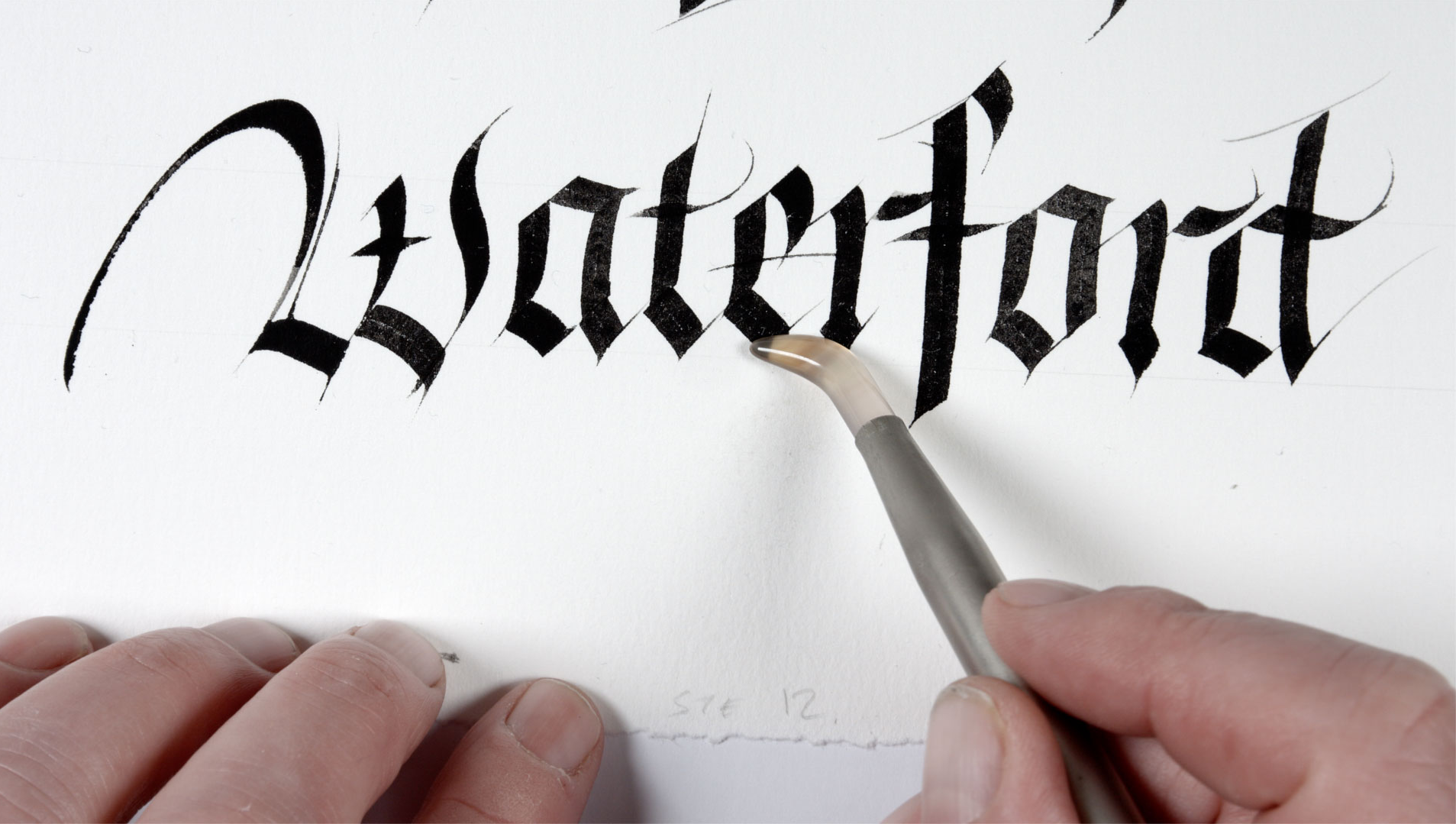
As part of re-opening the award winning Medieval Museum, we are taking a key artefact each day in the lead up to our re-opening. The Medieval Museum will re-open on Monday 29th June at 9:15am with online booking and social distancing in place at the entry and throughout the museum. Today’s artefact is the ‘Relic of the True Cross’.
In early 1096, the people of Waterford sent a letter to Anselm, Archbishop of Canterbury, in England, requesting him to appoint a bishop for the city. Though the inhabitants of the Viking city had been Christian for perhaps 100 years, Waterford did not have its own bishop. The letter was signed by Muircheartach Ó Briain, a great-grandson of Brian Boru. He was King of Munster at the time but he had ambitions to rule the entire country and therefore he signed the letter as ‘King of Ireland’. The man they had in mind for the position was Malchus, an Irish Benedictine monk who had been in Winchester Abbey in England for many years. On the 28th December 1096, Malchus was duly appointed as first bishop of Waterford and fifteen years later in 1111 he was also appointed Archbishop of Cashel.
Malchus was a true ‘builder bishop’. He was responsible for building St Peter’s Church located on the site of present-day City Square Shopping Centre in Peter Street. The foundations of the original church here were excavated by archaeologists in the 1980s. Malchus also began building Waterford’s first cathedral church soon after his arrival in the city and this was on the site of the present Christchurch Cathedral in the heart of Waterford’s ‘Viking Triangle’.
As bishop, one most urgent task facing Malchus would have been to acquire relics for his new cathedral. Relics were an integral part of medieval Christianity and all churches had relics, usually
associated with a particular saint. However, the most highly-prized relics of all were those associated with the life of Jesus and none more highly prized than a piece of the cross on which Christ was crucified – which was known as the True Cross.
For medieval Christians, the cross was the most potent symbol of their faith. According to tradition, the Emperor Constantine was told in a dream that if he adopted the Christian cross as the symbol of his army he would be successful in battle. As a result he became the first Christian emperor of the Roman Empire. His mother Helena visited Palestine and the holy places associated with the life of Jesus between 326 and 328. While in Jerusalem, the hiding place of the actual cross upon which Jesus was crucified was revealed to her in a vision. When she returned to Rome she brought the cross with her and it was stored in her palace’s private chapel. Over time pieces were taken from this cross and distributed to different churches and cathedrals throughout Western Europe and they were regarded as symbols of deep veneration.
This particular relic of the True Cross was a gift to Muircheartach Ó Briain from Pope Paschal II in the year 1110. Muircheartach could well have presented it to Malchus the following year in 1111 on his consecration as Archbishop of Cashel.
The relic is composed of five separate pieces of wood identified as cedar and arranged in the shape of an Archiepiscopal cross and is enclosed in silver. An Archiepiscopal cross has two arms and was the symbol of an archbishop. On the back is a Latin inscription which identifies the wood as a piece of the True Cross and this inscription has been dated to the very early 12th century.
Following the resignation of Malchus as Archbishop of Cashel, the relic of the True Cross remained in the cathedral in Waterford. It would have been encased in a larger cross or crucifix on the main altar. During solemn religious processions this crucifix with the relic inside would have been carried through the streets of Waterford by the bishop accompanied by the clergy of the diocese.
Following the Reformation, this relic was removed from the cathedral for safekeeping and, in 1620, a special bronze and silver case with a hinged glass front was made for it. This case is inscribed in Latin, “This piece of the wood of the Most Holy Cross belongs to the Cathedral Church of the Most Holy Trinity Waterford”.
In the early 18th century, the relic was given to the Aylward family of County Waterford by Bishop Richard Pierce. In 1840, it was given to Brother Joseph Murphy who had been a close associate of Brother Ignatius Rice, the founder of the Christian Brothers. Brother Murphy was the uncle of Margaret Aylward who founded the Sisters of the Holy Faith order of nuns. Brother Murphy succeeded Rice as Superior of Mount Sion in Barrack Street. The relic of the True Cross remained in the monastery until the 1930s, when it was returned to the Catholic Cathedral.
This relic, a very tangible link with the deep religious faith of the inhabitants of medieval Waterford, is now on display in the award winning Medieval Museum, Cathedral Square, Waterford.
We look forward to welcoming you to the museum from Monday next.


